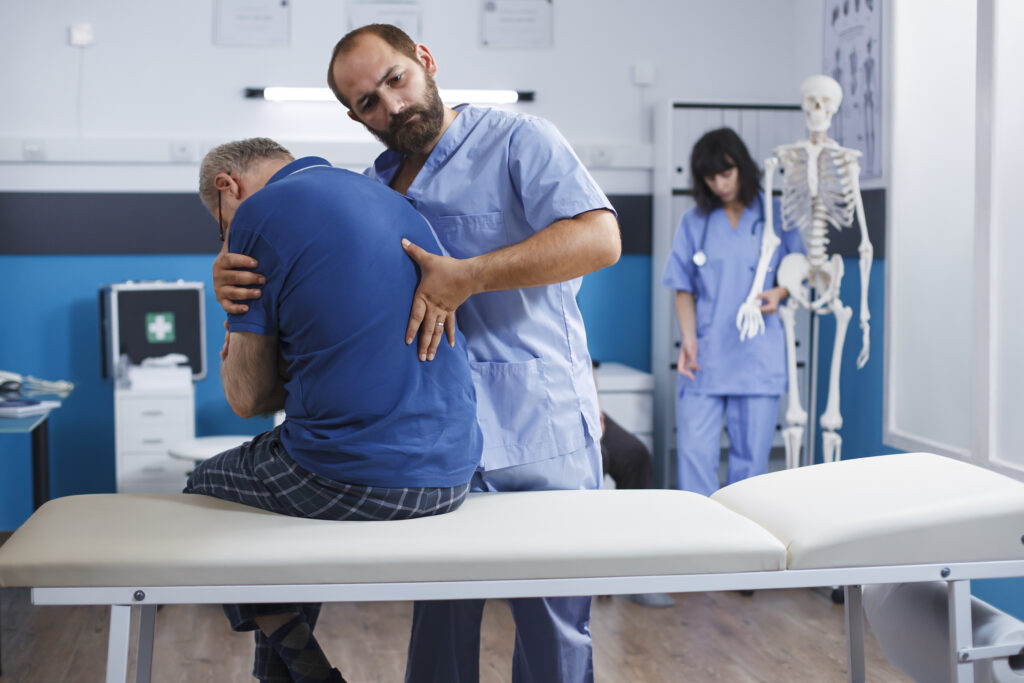When it comes to enhancing mobility for seniors, making a few strategic adjustments can make a significant difference. You might start by evaluating your living space and considering the incorporation of assistive devices. Regular exercise routines also play an essential role in maintaining strength and flexibility. In addition, don't overlook the importance of proper nutrition and hydration, along with scheduling regular health check-ups. Each of these adjustments contributes to a more active and independent lifestyle, but you may wonder which specific changes will have the most impact.
Home Modifications
Home modifications can greatly enhance seniors' mobility and independence. By making simple adjustments to your home, you can create a safer and more accessible environment. One of the first steps is to assess your living space. Look for potential hazards like loose rugs, cluttered walkways, or low lighting. Eliminating these obstacles can prevent falls and make it easier for you to navigate.
Installing grab bars in bathrooms and hallways provides essential support when moving around. Consider adding non-slip mats in the shower and bathtub to reduce the risk of slipping. You might also want to replace doorknobs with lever handles, as they're easier to operate, especially for those with limited hand strength.
Widening doorways can greatly improve access for mobility aids, such as walkers and wheelchairs. If your home has stairs, think about adding stairlifts or ramps to make traveling between floors safer. Verify that your living area is well-lit, and consider using motion-activated lighting to illuminate dark corners automatically.
In the kitchen, rearranging items to keep frequently used items within easy reach can minimize bending and stretching. You could also invest in a higher toilet seat or a shower chair to make daily routines more manageable.
Assistive Devices
Assistive devices play an essential role in enhancing mobility for seniors, offering support and independence in daily activities. These tools can make a significant difference in your daily life, allowing you to maintain your independence while maneuvering your environment more safely and comfortably.
One of the most common assistive devices is a walker. Walkers provide stability, making it easier to move around your home or outside. If you need a bit more support, consider a rollator, which features wheels and a seat, allowing you to rest when necessary.
Canes are another excellent option; they can help you maintain balance while walking, and they come in various styles to suit your preferences.
For those who struggle with stairs, stairlifts can be a game-changer. They allow you to traverse multiple levels in your home without the strain of climbing stairs. Additionally, grab bars installed in key areas, like bathrooms and hallways, can provide extra support where you need it most.
Don't overlook mobility scooters or power chairs if you need assistance for longer distances. These devices offer both comfort and ease of movement, making outings much more enjoyable.
Lastly, consider the benefits of smart technology, such as voice-activated home systems, which can help you manage tasks without physical strain.
Exercise Routines
Staying active is essential for seniors looking to maintain mobility and overall health. Incorporating a regular exercise routine can make a significant difference in your strength, flexibility, and balance. Aim for a mix of aerobic, strength-building, and flexibility exercises to create a well-rounded program.
Start with aerobic activities like walking, swimming, or cycling. These exercises get your heart rate up and improve cardiovascular health. Try to engage in at least 150 minutes of moderate-intensity aerobic activity each week. If you prefer, break this down into smaller sessions throughout the day.
Next, don't forget about strength training. Lifting light weights or using resistance bands can help maintain muscle mass and bone density. Focus on major muscle groups, aiming for two sessions per week. Simple exercises like seated leg lifts, wall push-ups, or chair stands can be effective and safe.
Flexibility exercises are equally important. Incorporate stretches into your daily routine to enhance your range of motion and prevent injuries. Yoga or tai chi can be excellent choices, promoting both flexibility and balance.
Lastly, always listen to your body. If something feels too challenging or painful, modify the exercise or consult a healthcare professional.
Consistency is key, so find activities you enjoy and make them a regular part of your life. By committing to a balanced exercise routine, you'll boost your mobility and enhance your overall quality of life.
Nutrition and Hydration
Good nutrition and proper hydration play an essential role in maintaining mobility and overall health as we age. Eating a well-balanced diet packed with nutrients helps you keep your energy levels up, maintain muscle strength, and support joint health.
Focus on incorporating a variety of fruits, vegetables, whole grains, lean protein, and healthy fats into your meals. These foods provide critical vitamins and minerals that aid in muscle repair and bone density, which are important for staying active.
Don't forget about hydration! As you get older, your body may lose its ability to sense thirst, making it easy to overlook fluid intake. Aim for at least eight cups of water daily, and adjust based on your activity level and climate.
Staying hydrated can help prevent muscle cramps, fatigue, and cognitive decline, all of which can hinder your mobility.
Consider discussing your dietary needs with a healthcare professional or a registered dietitian. They can help you create a meal plan tailored to your specific requirements, ensuring you get the right balance of nutrients.
If you're concerned about swallowing or appetite, small, frequent meals can help you get the nourishment you need without feeling overwhelmed.
Regular Health Check-ups
Regular health check-ups are crucial for maintaining your mobility and overall well-being as you age. They help identify any potential issues early on, allowing you to address them before they become more serious. Regular visits to your healthcare provider can catch problems like arthritis, osteoporosis, or cardiovascular issues, which can greatly affect your mobility.
During these check-ups, your doctor will assess your physical health, evaluate your medications, and make necessary adjustments to guarantee you're receiving the best care. Don't hesitate to discuss any concerns you may have, whether it's about pain, balance, or fatigue. Open communication allows your doctor to provide tailored advice that suits your specific needs.
Moreover, regular check-ups often include routine screenings, such as blood pressure checks, cholesterol levels, and diabetes screenings. These tests can help detect conditions that might limit your ability to move freely. Staying proactive about your health can lead to early intervention, which is crucial for maintaining your independence.
Consider scheduling your check-ups annually or biannually, depending on your health status. Make it a habit to keep track of your appointments and follow through with any recommended tests or referrals.
This commitment to your health not only boosts your mobility but also enhances your quality of life. By prioritizing regular health check-ups, you're taking a considerable step toward staying active, healthy, and engaged in life as you age.
Conclusion
Improving mobility for seniors is essential for maintaining independence and quality of life. By making simple home modifications, utilizing assistive devices, establishing a regular exercise routine, focusing on proper nutrition, and scheduling routine health check-ups, you can greatly enhance your mobility. Remember, small adjustments can lead to big changes. Stay proactive about your health, and enjoy a more active, fulfilling lifestyle. You deserve to move freely and safely!




